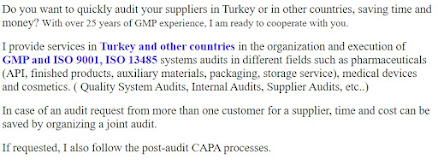Annex 1 is an essential part of the global pharmaceutical industry, specifically focusing on the manufacturing of sterile medicinal products. The European Union recently updated Annex 1 to reflect advancements in technology, industry practices, and regulatory expectations. The new revisions aim to enhance product quality, patient safety, and overall compliance.
- Quality Risk Management (QRM):
The new Annex 1 places a significant emphasis on QRM. Manufacturers are now required to adopt a risk-based approach throughout the entire manufacturing process. This means identifying, assessing, and controlling risks to ensure product quality and patient safety. - Contamination Control Strategy (CCS):
A new requirement of the revised Annex 1 is the implementation of a comprehensive CCS. This strategy involves a detailed examination of potential contamination sources and the development of robust procedures to mitigate these risks. - Sterilization Processes:
The updated guidelines provide more detailed requirements for sterilization processes. This includes specific criteria for various sterilization methods such as moist heat, dry heat, radiation, and filtration. The goal is to ensure that all products meet the highest standards of sterility. - Environmental Monitoring:
The new Annex 1 introduces stricter criteria for environmental monitoring. This includes more frequent and detailed monitoring of cleanroom environments to ensure that they meet the necessary standards for sterility and cleanliness. - Personnel Training and Qualification:
There is a stronger emphasis on the training and qualification of personnel involved in the manufacturing of sterile products. This ensures that all staff are adequately trained to perform their duties and are aware of the critical aspects of sterile manufacturing. - Premises and Equipment:
The guidelines provide updated requirements for the design and maintenance of manufacturing premises and equipment. This includes ensuring that facilities are built to prevent contamination and that equipment is regularly maintained and validated. - Process Validation:
The revised Annex 1 includes more detailed requirements for process validation. This ensures that all manufacturing processes are thoroughly tested and validated to produce sterile and high-quality products consistently.
Impact on the Industry:
The new Annex 1 represents a significant shift in the regulatory landscape for sterile medicinal product manufacturing. It requires manufacturers to adopt a more proactive and comprehensive approach to contamination control and quality assurance. While these changes may present challenges, they ultimately aim to improve product quality and patient safety.
Manufacturers will need to invest in training, new technologies, and updated procedures to comply with the new guidelines. However, these investments are expected to pay off in the form of higher quality products, greater regulatory compliance, and enhanced patient trust.
In summary, the new Annex 1 sets a higher standard for the manufacturing of sterile medicinal products, emphasizing risk management, contamination control, and rigorous validation processes. By adhering to these updated guidelines, manufacturers can ensure they produce safe, effective, and high-quality products that meet the evolving needs of the healthcare industry.
Related words: Key Changes in the New Annex 1, annex1, new annex 1,


Comments
Post a Comment